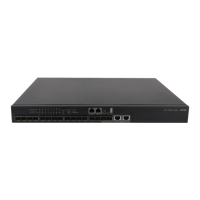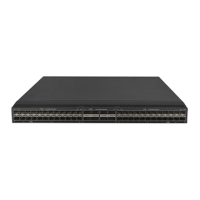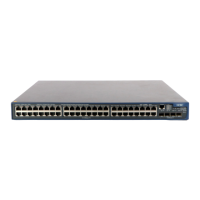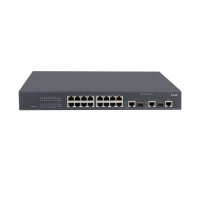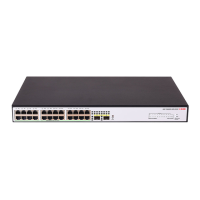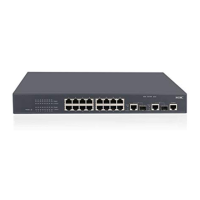17
irf-port-number: Specifies an IRF port on the member device. The irf-port-number
argument represents the IRF port index and must be 1 or 2.
Usage guidelines
To bind physical interfaces to an IRF port, you must enter IRF port view.
Examples
# Enter IRF-port 2/1 view.
<Sysname> system-view
[Sysname] irf-port 2/1
[Sysname-irf-port2/1]
Related commands
port group interface
irf-port-configuration active
Use irf-port-configuration active to activate IRF ports.
Syntax
irf-port-configuration active
Views
System view
Predefined user roles
network-admin
Usage guidelines
After connecting the physical interfaces between two devices and binding them to the correct IRF
ports, you must use this command to activate the settings on the IRF ports. This command merges
the two devices into one IRF fabric.
The system activates the IRF port settings automatically in the following situations:
The configuration file that the device starts with contains IRF port bindings.
You are binding physical interfaces to an IRF port after an IRF fabric is formed.
Examples
To configure and activate IRF-port 1/2 when the port is in DIS state:
# Bind Ten-GigabitEthernet 1/0/1 to IRF-port 1/2.
<Sysname> system-view
[Sysname] interface ten-gigabitethernet 1/0/1
[Sysname-Ten-GigabitEthernet1/0/1] shutdown
[Sysname-Ten-GigabitEthernet1/0/1] quit
[Sysname] irf-port 1/2
[Sysname-irf-port1/2] port group interface ten-gigabitethernet 1/0/1
You must perform the following tasks for a successful IRF setup:
Save the configuration after completing IRF configuration.
Execute the "irf-port-configuration active" command to activate the IRF ports.
[Sysname-irf-port1/2] quit
[Sysname] interface ten-gigabitethernet 1/0/1
[Sysname-Ten-GigabitEthernet1/0/1] undo shutdown
[Sysname-Ten-GigabitEthernet1/0/1] quit
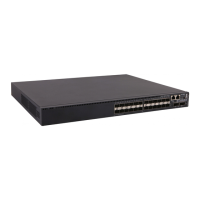
